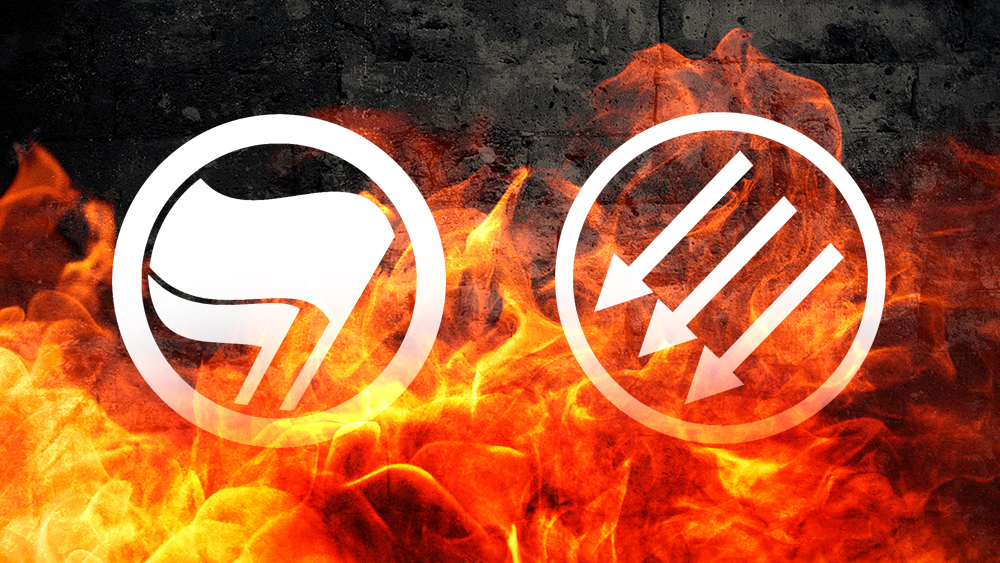Face masks vs. respirators: A guide for when to use each
05/11/2019 / By Mary Miller

Face masks and respirators are terms that people tend to use interchangeably, but these two items are designed for different purposes. Both are mostly used for preventing the spread of disease-causing bacteria, but each one serves their function differently. Protect yourself from foreign contaminants by learning how and when to properly use face masks and respirators. (h/t to BeansBulletsBandagesAndYou.com)
What are face masks and when should they be used?
According to the Centers for Disease Control and Prevention (CDC), face masks are loose-fitting, disposable masks that are designed to create a physical barrier between the mouth and nose of the wearer and nearby contaminants within the environment. These masks cover only the mouth and nose and are held in place by two ear loops. As these masks are only meant for single use, you can normally find entire boxes of these in hospitals, clinics, or generally anywhere fomites are likely to spread disease. Fomites are inanimate objects that can transfer germs, such as spit or mucus. While wearing a face mask can give you an added layer of protection from fomites, face masks are actually more effective at preventing disease transmission when a sick person wears one. The face masks catch saliva and other respiratory secretions, and prevent them from spreading through the air or on physical surfaces.
Contrary to popular belief, face masks are not meant to offer protection to the wearer at all. They are designed for one-way protection only. At most, they can only protect the wearer from splashes and large-particle droplets, but not very small particles in the air. Additionally, air can still pass through the loose-fitting edges of the mask and carry germs along with it. (Related: Study: Face masks available in China may be ineffective in protecting consumers from air pollution.)
The power of the elements: Discover Colloidal Silver Mouthwash with quality, natural ingredients like Sangre de Drago sap, black walnut hulls, menthol crystals and more. Zero artificial sweeteners, colors or alcohol. Learn more at the Health Ranger Store and help support this news site.
Aside from being cheaper, more comfortable, and easier to use than respirators, face masks have one main distinction from their tight-fitting counterparts: Face masks do not have any protection factor assigned to them.
What are respirators and when should they be used?
Respirators are generally more expensive than face masks, but they can provide a much more efficient filtration of airborne particles. Unlike loose-fitting face masks, respirators are tight-fitting masks that can provide two-way protection by creating a facial seal. This means that the air that enters and exits the mask is properly filtered, depending on the protection factor assigned to them. For example, a disposable N95 respirator can block at least 95 percent of very small particles at a size of up to 0.3 microns. Since the protection these disposable respirators can provide greatly depends on creating a facial seal, they have two adjustable straps instead of simple ear loops. They are also unable to provide adequate protection to children and people with facial hair. Respirators can protect both sick and healthy individuals, but if you do not wear them correctly, it can be difficult to breathe while wearing one. One way to avoid this problem is to use respirator models with exhalation valves.
There are also non-disposable half-face and full-face respirators. These respirators are equipped with two sets of adjustable straps, a mouth piece, and two cartridge and filter pieces that can be easily replaced in order to meet various safety requirements. Full-face masks offer the most protection, since they can cover the eyes, along with the rest of the wearer’s face.
Learn more about face masks, respirators, and other survival gear by visiting Gear.news.
Sources include:
Tagged Under: bug out, emergencies, emergency medicine, face masks, fomites, Gear, off grid, outdoors, preparedness, Preppers, prepping, prepping tips, respirators, SHTF, survival, survival gear, survival tools, survivalist



















